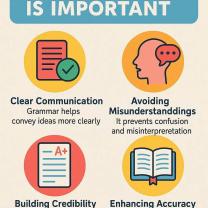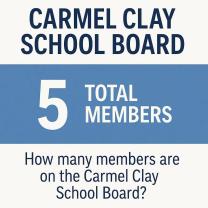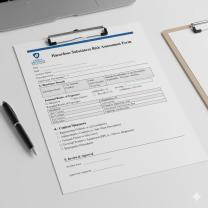What is the best way to learn web design?
Learning web design can be an exciting journey, and the most effective way to learn may vary based on individual preferences and learning styles. Here are some optimal strategies and steps to learn web design effectively:
Define Your Learning Goals:
- Clearly define your goals and what you want to achieve with web design. Whether it's building websites, mastering a specific technology, or becoming a full-stack developer, having clear goals will guide your learning path.
Understand the Basics:
- Start with the fundamentals of web design, including HTML, CSS, and basic JavaScript. These are the building blocks of web development.
Take Online Courses or Join a Program:
- Enroll in online courses or programs offered by reputable platforms like Coursera, edX, Udacity, or others. Look for comprehensive courses that cover HTML, CSS, JavaScript, responsive design, and more.
Practice Regularly:
- Learning web design is hands-on. Apply what you learn by building real projects. Create a personal portfolio website or contribute to open-source projects to gain practical experience.
Use Interactive Learning Platforms:
- Platforms like Codecademy, freeCodeCamp, and Treehouse provide interactive coding experiences. These platforms offer hands-on coding exercises and projects to reinforce your learning.
Read Documentation and Guides:
- Familiarize yourself with the documentation of web technologies and frameworks. Understanding how to use documentation effectively is a crucial skill for a web developer.
Join Coding Communities:
- Participate in online coding communities like Stack Overflow, GitHub, or web development forums. Engaging with a community can provide support, feedback, and networking opportunities.
Build Responsive Websites:
- Learn responsive design principles to create websites that work well on various devices and screen sizes. Understand the use of media queries and flexible layouts.
Learn Design Principles:
- Understand basic design principles, color theory, typography, and user interface (UI) and user experience (UX) design. Good design enhances the usability and aesthetics of your websites.
Explore Web Design Tools:
- Familiarize yourself with design tools such as Adobe XD, Sketch, or Figma. These tools are essential for creating mockups and prototypes.
Follow Web Development Blogs and News:
- Stay updated on the latest trends, tools, and technologies in web design by following web development blogs, newsletters, and industry news.
Build a Portfolio:
- Create a portfolio showcasing your projects and skills. A portfolio is crucial when applying for jobs or freelance opportunities.
Seek Feedback and Iterate:
- Share your work with peers or mentors to receive constructive feedback. Use feedback to improve and iterate on your projects.
Take on Real Projects:
- Apply your skills to real-world projects. This could include creating websites for friends, local businesses, or contributing to open-source projects.
Stay Consistent and Patient:
- Learning web design is a gradual process. Be patient and stay consistent in your learning. Celebrate small victories and milestones along the way.
Explore Advanced Topics:
- Once you are comfortable with the basics, explore advanced topics such as front-end frameworks (e.g., React, Angular), back-end development (e.g., Node.js, Django), databases, and more.
Consider Formal Education:
- If you prefer a structured learning environment, consider formal education options such as attending coding bootcamps, pursuing a degree in computer science, or enrolling in online certifications.
Remember that web design is a dynamic field, and continuous learning is key. Adapt your learning strategies based on your progress and evolving industry trends. Stay curious, practice regularly, and enjoy the journey of becoming a skilled web designer.
Effective Methods and Resources for Learning Web Design
There are many effective methods and resources for learning web design, both online and offline. Here are some key options:
1. Online Courses and Tutorials:
- Free platforms: FreeCodeCamp, The Odin Project, Khan Academy, and Mozilla Developer Network offer comprehensive web design tutorials and learning paths.
- Paid platforms: Coursera, edX, Udemy, and Pluralsight offer more structured courses with video lectures, quizzes, and projects, often with certificates upon completion.
- Individual tutorials: Websites like CSS-Tricks, A List Apart, and Smashing Magazine provide in-depth articles and tutorials on various web design topics.
2. Books and Ebooks:
- Classic books like "Don't Make Me Think" by Steve Krug and "Designing with Web Standards" by Jeffrey Zeldman provide fundamental design principles and best practices.
- Ebooks like "The Elements of Content Style" by Erin Kissane and "Refactoring UI" by Adam Wathan offer practical advice on writing for web and user interface design.
3. Practical Projects:
- Working on personal projects is one of the most effective ways to learn and apply web design skills. Start with small projects and gradually progress to more complex ones.
- Participate in online challenges like CodePen Daily and Hacktoberfest to build real-world projects and learn from other developers.
- Contribute to open-source projects to gain experience working in a collaborative environment and learn from experienced developers.
4. Online Communities and Forums:
- Online communities like Reddit's r/webdev and Stack Overflow offer invaluable resources for asking questions, seeking help, and staying updated on the latest trends.
- Attending online conferences and workshops allows you to connect with other web designers, learn from industry experts, and gain valuable insights.
- Local meetups and hackathons offer opportunities to network with peers, collaborate on projects, and learn from each other.
Benefits of Practical Projects:
- Reinforce knowledge: Applying theoretical concepts to real-world projects solidifies your understanding and helps you remember information better.
- Develop practical skills: Projects allow you to practice your coding skills, experiment with different design tools, and learn how to solve design problems effectively.
- Build a portfolio: Showcase your best projects in your online portfolio to demonstrate your skills and attract potential clients or employers.
- Boost confidence: Completing projects successfully provides a sense of accomplishment and builds confidence in your abilities as a web designer.
Role of Online Communities:
- Get help and feedback: Online communities offer a platform to ask questions, get help from experienced developers, and receive constructive feedback on your work.
- Stay updated: Communities keep you informed about the latest trends, technologies, and best practices in web design.
- Find inspiration: Explore other designers' work, get inspired by their projects, and learn new techniques and approaches.
- Network and collaborate: Connect with other designers, collaborate on projects, and build valuable relationships in the field.
Choosing the Right Resources:
The best resources and methods for learning web design depend on your individual learning style, budget, and prior experience. Explore different options, experiment, and find what works best for you. Remember, the key to success is consistent practice, dedication, and a willingness to learn and grow.












